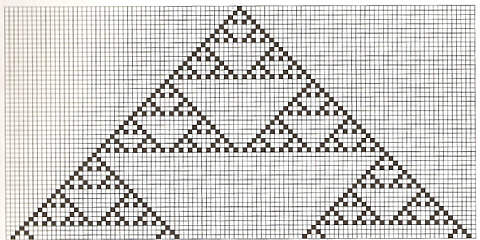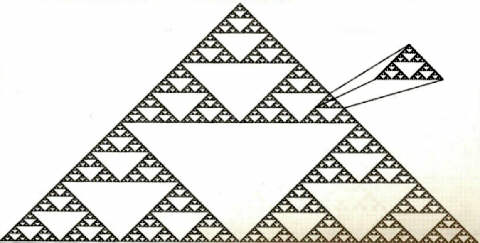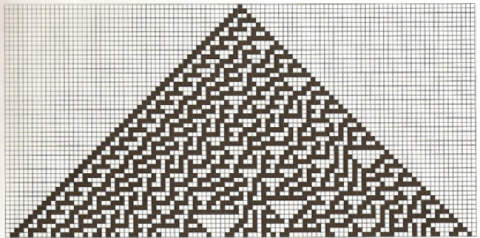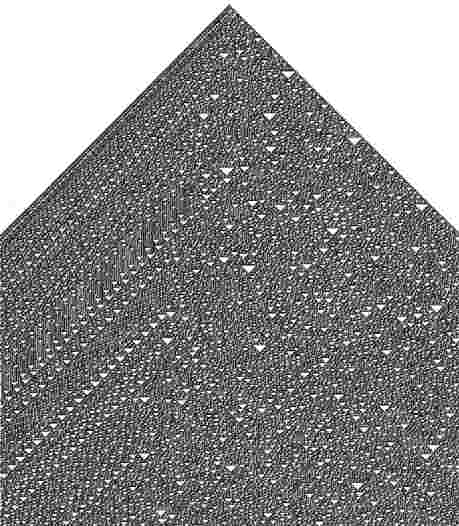 <
<
 >
>
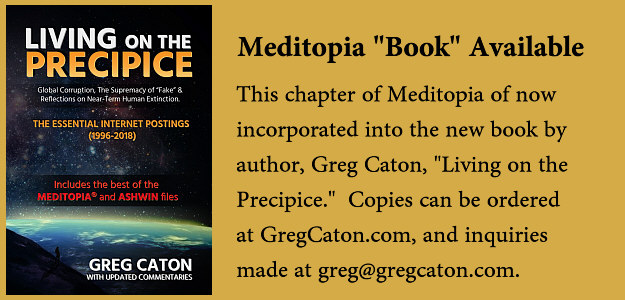
|
Book II :
A Brief People's History of Medicine
|
Chapter 5:
Seed Corrupted

 "[The reigning] model of human history,
carefully built-up by scholars over the past two centuries,
is sadly and completely wrong . . . [It is something which
we cannot] put right with minor tinkering and adjustments.
What is needed is for the existing model to be thrown
out the window and for us to start again with open minds
and with absolutely no preconceptions . . ."
"[The reigning] model of human history,
carefully built-up by scholars over the past two centuries,
is sadly and completely wrong . . . [It is something which
we cannot] put right with minor tinkering and adjustments.
What is needed is for the existing model to be thrown
out the window and for us to start again with open minds
and with absolutely no preconceptions . . ."
Graham Hancock
1
 hen I was in my early
teens -- we're talking early 1970's -- I attended a seminary . . .
Think high school with no girls, pressed uniforms,
strict rules, a campus marked with
Roman Catholic symbolism everywhere,
daily observance of innumerable elements of
ritual . . . a matrix within the Matrix, if you will.
Readers should not read disparagingly into my description,
because my overall remembrance of the experience is far
more positive than negative.
 However, even in
my own time, at that early age, I was able to witness how
Orthodoxy twists empirical evidence in amazingly convoluted
ways to fit its own agenda. Specifically, I can remember
one class where the lecturing priest attempted to reinforce
a long held believe among strict creationists, namely that
our planet, our solar system, our galaxy . . . indeed, the
entirely of the Universe, was not only created in seven
days, but that the Universe could not possibly have existed
prior to 4,004 B.C.
 And how would one
explain recently developed methodologies, such as carbon-14
dating, which show that the earth is -- at the least --
billions of years old? Well, that's easy, stated my
professor, brimming with confidence, "For all we know,
a day at the time of Creation may have been equal to
a billion years in our time."
 As I glanced around
the classroom, I was equally sure that I was not the only
one in attendance not buying this nonsense. (Years later I would
remember this experience while contemplating
Joseph Campbell's "chiding mother," who scolds her twelve
year old son for writing a paper on evolution,
sans Adam and Eve. ["Oh, those scientists!
Those are only theories!"])
[ 2]
 Those who hold themselves
as unyielding adherents to Modern Science have no cause
to laugh or belittle, however. For a far greater discovery
in my own life is the degree to which our own orthodox
system of knowledge is caught in a vast fabric of cognitive
disonance. It rivals in orders of magnitude the minor prejudice
that ensnared my high school professor.
 As I discussed in Kuhn's work in Chapter 4
[ sidebar], the fatal flaw in
Scientism is that it cleaves not to the quest for Truth, but
to the power of concensus among a professional elite, who exist
to tell the unwashed masses the Truth that is acceptable
for them to believe. Concurrent with this, they must do what
they must to convey that financial and political success,
the yardstick by which people of our Age measure their worth,
has no influence on the integrity of their work within their
underlying disciplines. (That people everywhere accept this
absurd proposition is yet another example of Doublespeak.)
 Although prevailing
historical thought gazes at our Western mechanistic world view
and places its origins at the foot of Descartes, or
even Bacon
[ 3], I maintain that a more
penetrating mind will see that the seeds of our current
predictament go back much farther. Toynbee himself, who ascribed
to Western Civilization a position of "apparentation" from
Graeco-Roman or Hellenic Society, was still able to see
enough homogeneity in the twenty civilizations that
have lived, breathed, and died before ours in
the last 6,000 years to say that "(all) should be regarded
hypothetically, as philosophically contemporaneous and
philosophically equivalent."
[ 4] For Quigley, in his count
of "twenty civilizations which have existed in all of
human history," there can be found one "common pattern
of experience."
[ 5]
 I maintain that these
common elements are particular to this Age, but not prior
Ages . . . that there are, as it were, "Global Cultural
Operating Systems" (GCOS) that operate inter-cataclysmally -- between
truly severe mass extinction events. These, however, must
not be confused with smaller cataclysmal phenomenon which
are not sufficiently severe to cause the GCOS to be rewritten --
only rebooted. Within the GCOS are numerous sub-cultures,
some operating at various times within the life of a GCOS
that are at considerable variance from one another. Those
sub-cultures that are dominant (as "Modern, Western Civilization"
does now) are those that play to the strengths of prevailing
GCOS . . . as in the Prisoner's Dilemma game model we examine
later in this section.
 We cannot proceed to
examine the history of medicine in our own time, unless we
understand the GCOS under which it operates. In attaining
this understanding, we first create some fundamental
premises.
 A fundamental
errancy that has dogged orthodox archeology, as
tenaciously as the theme of "chemotherapy and
radiation treatment for good health" has dogged
modern medicine. is that history is linear -- that
as my creationist history teacher implied:
our civilization rides a linear wave of progress
from our progenitors ascending fruit-laden trees butt-naked in the jungle to
modern men ascending gleaming skyscrapers in fast-moving elevators.
And whether the time span appointed for this alleged improvement
is 4,000 or 4 billion years, held within the
grips of religious creationist thought or
Neodarwinism, is immaterial.
 They're wrong -- and the Catastrophists
are correct, through the sheer weight of the empirical evidence.
 Holding onto ideas that
support an establishment's dogma is no more fitting today
than assuaging the prejudices of flat-earth proponents
five centuries ago. Those who wish to spend untold hours
going through incontrovertible evidence without the
pre-approval of the Establishment might start with
Michael Cremo, or even Immanuel Velikovsky.
(See [ 6 ].)

 The Ottosdalin metallic spheres
are made of such sophisticated material that they cannot be scratched
by steel. Found embedded in pyrophyllite rock in the early 1980's, they appear
man-made and yet pre-date any acceptable age for advanced life forms
on earth. They were made approximately 2.8 billion years ago . . .
right here . . . on earth . . . Note: that's billion, not million.

"[We are besieged with the ignorant notion that]
if facts do not agree with the favored theory, then such
facts, even an imposing array of them, must be discarded . . .
There exists within the scientific community a knowledge
filter that screens out unwelcome evidence. This process
of knowledge filtration has been going on for well over
a century and continues to the present day . . . "

" . . . Man disfigures the past to purge it of anything that
violates his need to have harmony and stability, to have
'the heavens themselves, the planets, and this centre,
observe degree, priority and place.' "
[ 6 ]
|
 It is beyond the
scope of this book to re-itemize the thousands of pieces
of evidence that clearly show that men -- or to speak
more broadly -- humanoids as intelligent as ourselves have
lived on this planet for not hundreds of thousands of
years, but for what would appear to be hundreds of millions
of years. The unspeakable damage that such evidence would
inflict on any of the variations of current Neodarwinism
thought is self-evident. (What is not so self-evident
is why something
as simple as humanoid footprints that are 250 million years
ago cannot be properly addressed by modern archeology --
and are relegated to investigators on the fringe.)
[ 7]
 And yet it is not
as if members of the orthodox scientific establishment
have not come to similarly dismissive conclusions about
some of the most hallowed tenets of our origins. (What comes to mind are
things like the late-in-life relevations of Francis Crick,
the Nobel Prize winning co-discoverer of DNA. He capped
his career preaching that man most probably did not originate
on planet earth, but was the result of panspermia -- that is,
seeding from extraterrestrial origins).
[ 8]
 For readers who cannot
accept this Premise as a given, a more thorough reading
of books in the Footnotes of this chapter is recommended.
Quite apart from footnoted published sources, I can say
from personal experience, that numerous colleagues have told
me through the course of their own journey that they have
independently come to the conclusion that man's history
on earth is far
older than convention would have us believe.
 And if you believe
that man -- or beings close to us in morphology and
intelligence -- is hundreds of thousands, if not untold millions
of years old, than you have to accept that there must have
cataclymic events -- lots of them -- that have completely
wiped out earlier civilizational periods. As it turns out, there
is plenty of archeological evidence to support the contention that mass
extinctions occur with a frightening regularity on this planet --
far more than convention would admit.
[ 9]
 Such evidence forms
the backbone of my second premise.
 The archeological evidence,
most of it spurned by the orthodox community, showing that
mass extinctions have taken place on earth with a shocking
regularity, is so voluminous that a host of theories have
arisen to try to make sense of the data. Some cataclysms
are mildy severe, such that the global operating system has to reboot.
Like your computer, your system starts anew -- but still, with
no changes having been made to your operating system. (Only
when the cataclysm reaches serious mass extinction levels is the
GCOS entirely rewritten -- but we'll get to
that later.)
 Richard Firestone, and
his associates, have written about the relatively recent
effects of a super nova explosion (their best candidate
being called "Geminga") that
caused mass extinction events on this planet in waves,
at roughly 41,000, 34,000, and a longer wave that occurred
13,000 to 16,000 years ago. The effects of the first wave
were so great that virtually all megafauna on the North
American continent was destroyed (i.e. horses, camels,
mammoths, masadons, etc.)
[ 10]
 The evidence is
compelling and overwhelming.
 Thought provoking
is Firestone's approach in including indigenous
stories which support and enlarge the evidence gathered --
(seventeen in all).
[ 11]
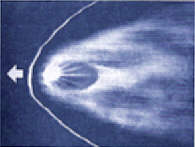
 As Firestone points out,
supernova remnants move with incredible speed. This specimen
from the constellation Sagitarrius travels at more than
1.3 million miles per hour. The evidence suggests that a similar
fragment hit earth around 41,000 BCE. Because the life of a man
is of such short duration, we are not able to appreciate just
how dangerous our galaxy is and how frequently our solar system
(and earth specifically) encounters extraterrestrial objects.
(p. 175)

"Legend has one great foe to its perpetuation -- civilization.
Civilization brings with it a contempt for everything which
it cannot understand; skepticism becomes the synonym for intelligence;
men no longer repeat -- they doubt, they dissect, they sneer,
they reject, they invent . . . "
[ 12 ]
|
 Equally impressive
is the work of D.S. Allan and J.B. Delair. They distill
a host of archeological findings, some of which overlays
Firestone's comments concerning conditions evidenced
after the Younger Dryas period. One of the
results of
this particular extraterrestrial cataclysm (which many
believe to have been caused by the celestial body,
Phaeton, popularized by Ovid) was "the flood."
As it turns out, the resulting deluge
is not an isolated story from
the Bible. There are over 500 known stories, most from
the descendants of indigenous survivors scattered around
the world on all six populated continents that confirm the event --
which the authors estimate happened approximately
9,500 BCE.
[ 13]
 Where I live in
South America, the legends of previous great civilizations
is rampant. Harold Wilkins provided a connection between
legends throughout Latin America and the fall of Atlantis
[ 14]
 Of more recent date,
is the collection of essays brought together by
J. Douglas Kenyon in his Forbidden History
[ 15], who introduces his
work by reminding us of the miopic conditions that prevent
us from recognizing the signs of our immense past that
are all around us:

"[For] after all, it is argued, if there
had been an earlier, advanced civilization we would
have discovered unmistakeable evidence of its existence.
Presumably, we would have seen the remains of its highways,
and bridges, and electrical wiring. We would have found
its plastic bottles, its city dumps, and its CD-ROMS.
Those are, after all, the things we will leave
behind for future archeologists to puzzle over.

"But could an ancient civilization have risen to heights
similar to our own, yet have traveled a different road?
What would we understand of a world that might have
employed fundamentally different -- though no less
effective -- techniques to harness the forces of nature?
Would we, or could we, comprehend a world capable of,
for example, creating and transmitting energy by
means other than a power grid, traveling great distances
without internal combustion engines, or making highly
complex calculations involving earth science and astronomy
without electronic computers?
 "Do we have the grace
to recognize and respect achievements other than our own,
or must we take the easy way out and resort to crude
stereotyping of our mysterious primitive ancestors, dismissing
out of hand anything we don't immediately understand? "
[ 16]
|
 Kenyon himself goes on to
note that Velikovsky studied the issue of prior civilizations
extensively and came to the conclusion that modern man
is suffering from a collective amnesia . . . that tramatic
events of the past have so scarred man's collective
consciousness that a protective psychological defense
mechanism prevents us from remembering events we cannot
bear to remember. On the individual level we call this
post-traumatic stress syndrome, but, as Kenyon notes,
why could this diagnosis not apply to the culture of
an entire planet?
[ 17]
 It is futile
to grade the probability of the various theories
that have emerged to explain the new archaeological
data -- and it is unnecessary for the purposes
of our study. What IS important is to recognize
that evidence exists that entire world civilizations
has fallen and been replaced by new ones. And it
is at the juncture where cataclysm occurs, where
nature has "cleaned out the pitri dish," laid
waste prior complex societies and ecosystems
worldwide, and left advanced life forms to
begin anew that real change can occur, unhampered
by huge inertial impediments of the prior age.
 Any computer
programmer knows that when he or she sits down to
write code, the moment where the screen is bare and
not one character has been set down holds infinite
possibilities, limited only by the boundaries of
the underlying hardware. With the first line brings
dramatic limitation. Structure has begun.
Functionality requires focus and limits.
There may be 50,000 lines of code -- but none that
so narrow the course of what follows as the
first few lines.
 An arrow
may travel 200 meters to reach its target, but
nothing so restricts the direction, range, and
speed of the arrow as the conditions set by the
archer before the arrow leaves the bow.
 I maintain
that to uncover, through a process not unlike
linear regression, what code was written at the
beginning of one's Age, one may, with a level
of comprehension that borders on the metaphysical,
grasp everything else that follows. You cannot understand
the essence of your Age, see through thousands of
years of Orwellian Doublespeak, or successfully
navigate through a sea of cognitive disonance
and the unending disparities between common
narratives and the understandings of Elites,
if you don't.
 My journey
in coming to this conclusion was greatly aided
by the work of Stephen Wolfram. A prodigy
in mathematics, Wolfram began at age twelve (1972) to
study cellular automata and was surprised to find
that formulas of immense simplicity gave rise to
patterns of such unintended complexity that the outcomes
were completely counter-intuitive. We live,
after all, in a world culture where it is given
that engineering a complex outcome requires
the development of complex inputs.
 Devoting
himself, for the next 30 years -- first as an
occasional hobby and then eventually with
considerable effort -- to studying this phenomenon,
Wolfram released his findings in 2002.
[ 18]
 Early on,
Wolfram provides 255 "rules," or simple formulas
to demonstrate his "new science." His question
began with a simple idea, or as he himself explains:

"New directions in science have typically been initiated
by certain central observations or experiments. And for the
kind of science that I describe . . . these concerned
the behavior of simple programs.
 In our everyday
experience with computers, the programs that we encounter
are normally set up to perform very definite tasks.
But the key idea that I had nearly twenty years ago . . .
was to ask what happens if one instead just looks at
simple arbitrarily chosen programs, created without
any specific task in mind. How do such programs
typically behave?
 The mathematical
methods that have in the past dominated theoritical
science do not help much with such a question. But
with a computer it is straightforward to start doing
experiments to investigate it. For all one need do
is just set up a sequence of possible simple programs,
and then run them and see how they behave...
 An important
feature of cellular automata is that their behavior
can readily be presented in a visual way. And so the
picture below shows what one cellular automaton does
over the course of ten steps.
[ 16]
|
 The picture Wolfram
points to is shown below. The precondition is simple:
each every step, as in all cellular automata of this type,
there is a definite rule determining the color of a given
cell from the color of that cell and its immediate
left and right neighbors on the step before. Here,
the formula is: each cell on each row will be black
where it or either of its neighbors were black on the step before:
 Simple, right? . . .
We know what this pattern is going to look like 10,000
generations from now. But what happens if we introduce
the tiniest variation -- still keeping the formula simple.
Do we still get a predictable, intuitive result?
In the 50 generation sample below, we see the pattern
produced by "Rule 90," shown on p. 25 of Wolfram's book.
The formula is as follows: a cell should be black
whenever one or the other, but not both, of its neighbors
were black on the step before. [Click to
enlarge, or see p. 25 of
New Science.]
 It's not all that
complicated, but it still contains nested elements that
would not have occurred to us without forethought --
namely, producing the automata for ourselves from
the formula provided. The following
example is the same formula taken out 500 steps.
It is more complicated, but still just a larger
version of the 50 step evolution of the same formula.
Novelty has peaked. [Click to enlarge, or see p. 26
of New Science.]
 The last example
we'll use from Wolfram's work is called Rule 30.
The formula is: Look at each cell and its
right-hand neighbor. If both of these were white on
the previous step, then take the new color of the cell
to be whatever the previous color of its left-hand
neighbor was. Otherwise, take the new color to be
the opposite of that. Given a moment of
thought, you realize that this is still a very simple
formula. Taken out 50 generations, we get the
following. [Click to enlarge, or see p. 27
of New Science.]
 What we get, on the
surface, appears to be chaotic. We see neither discernable
order or clearly defineable regularity. However, if we
carry out the automaton evolution to 500 generations,
we get a complete different picture. Although chaos
still occupies the right side of the pattern, a very
regular set of patterns emerges on the left. The
imbalance exists because even if we were not immediately
aware of it, even if it didn't appear intuitive to us at
the onset, the originating formula contained with it
the requisite assymetry. [Click to enlarge, or see
p. 29 of New
Science.]
 Wolfram was not the
first to note the enormous, unforeseen complexities that
can emerge from simple initiating conditions. The
emerging field of chaos theory was built on this premise.
Years earlier, Gleick noted in his treatise on the subject
a population biologist at Princeton University who in the
early days of this discipline was "about to publish an
impassioned plea that all scientists should look at the
surprisingly complex behavior lurking in some simple
models."
[ 19] Seen, from a different
angle, the impetus behind Sheldrake's work on
"formative causation" was based, in part, on his observation that
in terms of morphology, behavior, social structure, etc.,
there was far too much that could not be explained through
conventional, mechanistic explanations of genetic
predisposition. (In other words, how is it possible
for all this complexity to emerge from such simple
biological preconditions. We must be missing something).
[ 20]
Nevertheless, Wolfram's work is the most illustrative for our purposes.
 The idea that marks
our current premise is simple, but not novel. Moreover,
it is hardly controvertible. In fact, the converse is ludicrous:
that you have severe cataclysms that decimate people, their civilizations,
the animal and plant life of the period . . . that you can, essentially, bring
breathtaking destruction to the existing order, and then, as if by
magic, the GCOS of the one dominant species
continues on, unimpeded.
 Cultural operating systems,
once set in motion in earnest, are like tailor-made gloves.
If you destroy the hands for which the gloves were made,
you render the gloves useless. Someone else may wear
them, albeit ill-fitting. If my analogy appears awkward it
is because it is -- and we grope to find one that is better.
Cultural operating systems are not tailor made; they grow as the new
emerging Age following a world cataclysm grows. Calcification
begins to set in only a few centuries after inception, taking
millenia to unfold until, to use the conceptual
framework of Terence McKenna, the novelty critical to the
survival of that civilization approaches zero.
[ 21]
 What is more
controvertible is the existence of a truly worldwide cultural
operating system. Does enough commonality exist, as is
alluded to by our earlier comments from Toynbee and
Quigley? Surely, the records of cultural anthropologists
are replete with stories of clashing civilizations that
are not only distinctly different, but completely
opposite in character. The most notable example for those
of us who have lived most of our lives as North Americans,
is that of native, indigenous peoples versus Western
Civilization, characterized by waves of Europeans who
sought not to co-exist with native cultures, but control,
conquer, and subsume them.
 Whereas European culture
carried with it a concept of governance that served primarily
monied interest, native cultures were primarily socialist,
in the truest sense. European leadership was marked by what
it could take from its people; native peoples in North America
accessed leadership by what it did for its people. Europeans
left medicine and the healing arts to a specialized class;
native peoples felt that something so personal as healing should
be owned by everyone in the tribe. Europeans spread with
them law enforcement, prisons, and criminal laws; native peoples
did not have law enforcement, prisons, or criminal laws because,
living in an appreciation of life in its natural state, they
never needed them -- crime being rare. Europeans had a concept known as the
mental institution; native peoples didn't have them and
couldn't relate to them, because their people had no concept
of mental illness -- probably because their lifestyles don't
lend themselves to producing people who are mentally ill.
 Seton illustrates
these distinct differences between these localized sub-cultures
(as opposed to World Cultures) then
quotes Dr. Edgar L. Hewett in his own comparison,
"There can be no question that the Red man
had evolved a better civilization than our own. Its one
weakness was in the fact that it did not carry the mastery
of metals . . . In esthetic, ethical, and social culture,
the Indians surpassed their conquerors . . . it is to the
glory of the American Indian race that it developed a type
of government entirely different from that of the European,
and more effective. The welfare of the people was the
supreme end of government." (1930)
 Professor C. A. Nicols,
reportedly a "profound student of Indian life," was quoted
in the same work, saying: "I am afraid we have stamped out
a system that was a producing men who, taken all round,
were better than ourselves."
[ 22]
 Surely, one cannot say
that Western Civilization and the cultures of the hundreds of
native tribes that occupied North America were similar.
They certainly are not branches coming from the same tree.
 So what can possibly
be meant by a controlling or Global Cultural Operating System?
The answer, strange as it seems, comes from examining what
has become a widely accepted tenet of evolutionary biology:
our "selfish genes."
 It goes without saying
that in our global Western culture, it is competition,
and not cooperation, which provide the backdrop for our
sense of healthy development, advance, and self-worth.
(For example . . . do we ever consider the implications of our
ubiquitous sporting events as they reflect on our culture?
Remember, I cannot call myself successful unless I have beaten all
my opponents. I am not a winner unless all others up to the
point of my coronation are certified losers.)
 It wouldn't seem right
to see the scientific establishment, to which the current, dominant
sub-culture within our GCOS gave birth,
provide a self-definition that deviated from
this outlook. "We are survival machines -- robot vehicles
blindly programmed to preserve the selfish molecules known
as genes."
[ 23] And not just people:
" . . . all animals, plants, bacteria, and viruses."
[ 24] The problem I have with
Darwinists like Dawkins is that, if -- truly -- we are
reduced to nothing but machines exclusively committed to the four
"F's" (feeding, fearing, fighting and fucking) does this not
severely limit our cultural development possibilities?
Or are we not limited in seeing all our cultural development
options through the rubric of our current global zeitgeist?
 Dawkins saw in an
old game, Prisoner's Dilemma, the opportunity to examine
the possibilities.
[ 25]
There are many variations to this extremely
simple two party game, but here is the the original one, the one used
by Dawkins in his book. At the center of the game is a
"banker," who pays winnings and collects "fines" from the
two players. Each side has but two hards in his hands.
One is marked "cooperate" and the other "defect." Each
holds the cards face down so that the other party cannot
see or be influenced by the other's move. We submit our
playing card and wait for the banker to turn them over.
 The outcome is very
limited -- or so it seems: two to the second, or four.
The outcomes, and the payments and fines connected thereto,
are as follows:
 Outcome 1 -- BOTH
COOPERATE: Outcome 1 -- BOTH
COOPERATE: The banker each pays us $300. We call
this outcome, REWARD.
 Outcome 2 -- BOTH
DEFECT: Outcome 2 -- BOTH
DEFECT: The banker fines each of us $10. We call this
outcome, PUNISHMENT.
 Outcome 3 -- YOU
COOPERATE, I DEFECT: Outcome 3 -- YOU
COOPERATE, I DEFECT: The banker pays me $500 (the Temptation
to Defect) and fines you (the Sucker) $100.
 Outcome 4 -- YOU
DEFECT, I COOPERATE: Outcome 4 -- YOU
DEFECT, I COOPERATE: The banker pays you the Temptation
payoff of $500 and fines me, the Sucker, $100.
 The table below illustrates
the outcomes, with all monetary gains or losses indicated from
my perspective:
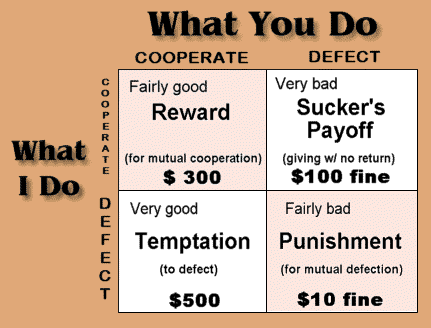
 The simplicity of the game
and the surprising number of possible outcomes when played
through an extensive number of rounds is beguiling. When played
repeatedly (called "Iterated" or "Repeated" Prisoner's Dilemma),
you get a wide range of potential strategies. These strategies
carry descriptive names (like "Always Cooperate" and "Always
Defect" -- where, as you can see under the prevailing rules,
the latter will always defeat the former . . . "Tit for Tat," where the player
cooperates on the first move and thereafter copies the previous
move of the other player . . . "Naive Prober," identical to Tit
for Tat, except that there are random moves where the player
throws in a gratuitous defection and claims the high Temptation
payment . . . "Suspicious Tit for Tat," identical to Tit for Tat,
except that it defects on the first move . . .
"Remorseful Prober," like Naive Prober except that it
remembers whether it has just "spontaneously defected, and whether
the result was prompt retaliation. If so it 'remorsefully' allows
its opponent 'one free hit' without retaliating; etc.)
 Dawkins leans heavily
on the work of Robert Axelrod, who ran computerized competitions
using a variety of submitted "strategies." Those strategies
leaning in favor of cooperation were termed "nice"; those in
favor of defection, "nasty." These strategies can be thought
of in terms of localized cultures, or perhaps the culture of
an entire civilization. The rules of the game -- Prisoner's
Dilemma -- can be thought of as our Global Cultural Operating
System, of which the strategies or localized cultures are
but possible subsets. Stated another way, you might think of
the GCOS as the global cultural conditions over which
sub-cultures are strategies for playing, within those set
of rules.
 Statistically -- but not
intuitively, the "nice" strategies faired better overall.
In fact, Dawkins entitles the chapter on this subject,
"Nice guys finish first."
 Such outcomes, however,
do not translate into the real world. I suspect that this is
largely because of the artificiality of the game: each player
sees the move of his opponent as soon as it is played.
The same rules apply to both sides. Knowledge is not
bifurcated. Truth is not sequestered.
 It goes without saying
that today's "winning strategy" --
modern or "Western" civilization -- is most decidedly "nasty."
It is not by accident that an axiom
of American business is the expression, "Nice guys come in last
place." It is with this self-evident observation that Harold
Bloom could look at the expanse of history, find within it the
unerring leaning to the forces of the demonic and proclaim,
"Nature does not abhor evil; she embraces it. She uses it to
build. With it, she moves the human world to greater heights
of organization, intricacy, and power . . . Death, destruction,
and fury do not disturb the Mother of our world, they are merely
parts of her plan. Only we are outraged by the Lucifer
Principle's consequences . . . for we are casualties of Nature's
callous indifference to life, pawns who suffer and die to live
out her schemes. One result: from our best qualities come out worst.
From our urge to pull together comes our tendency to tear each other
apart. From our devotion to a higher good comes our propensity to
the foulest atrocities. From our commitment to ideals comes our
excuse to hate. Since the beginning of history, we have been blinded
by evil's ability to don a selfless disguise. We have failed to see
that our finest qualities often lead us to the actions we most
abhor -- murder, torture, genocide, and war." It is no wonder that
in observing the effects of what was, even then, the winning strategy
of our current global operating system,
Descartes would come to the conclusion that the "basic categories
of ethics are not good and evil, iniquity and righteousness,
but, as in the natural world, power and impotence."
[ 26]
 The astute reader will not
miss this application of this tendency in modern medicine.
Stripped of its well-worn, thread-thin propaganda, we see an
organism that creates diagnostic techniques that actually induce
disease [ 27],
vaccines that confer more disease than they have ever prevented
[ 28],
pharmaceutical drugs with laughably lengthy side effect
caveats that even at their best address one or more symptoms,
rarely the underlying cause -- why? because they're fundamentally
toxic [ 29],
scientific research elites who effectively create parameters
that absolutely insure that it will be impossible to find a cure
for the disease for which taxpayers are paying them billions
[ 30], regulatory agencies
(think: U.S. FDA) that work to ban or make unavailable
inexpensive vitamin and mineral products that threaten
pharmaceutical profits [ 31]
or even EXISTING medications for indications
when they threaten existing patent drugs
[ 32], prostitutional medical
journals that admit that the research they are publishing
make a "mockery of clinical investigation,"
[ 33] . . . to name just a few of
defining attributes that form the cesspool that is
modern, organized medicine.
 Has it always been this
way and must it always be? Bloom closes with a glimmer of hope,
stating "To our species, evolution has given something new --
the imagination. What that gift, we have dreamed of peace.
Our task -- perhaps the only one that will save us -- is to
turn what we have dreamed into reality."
[ 34] I agree with Bloom's sense
of urgency concerning our future, but I disagree with his
assessment of our past.
 Our age is Luciferian
because it is so dictated by our current dominant Global Operating System,
set in place at the close of the last major catastrophy -- the Deluge,
an event that was not the last major global catastrophy, but certainly
its most severe. (See Velikovsky).
Evidence abounds of a Golden Age -- one preceeding the current
run of 26 civilizations -- where peace dominated, life was
simple, and the Luciferian principle did not hold sway.
"The malaise has apparently been perceived in all civilizations,"
notes Hiram Caton, "for none lacks a mythology of yearning
for the golden age and the simple life."
[ 35] Steve Taylor's recent work
combs through considerable recent anthropological evidence to show
that throughout the world, indigenous peoples tell of a "Golden Age,"
where war was virtually non-existent, in patriarchy's place stood
an equality and mutual respect between the sexes, greed and
exploitation were unknown as they are now, and predominant was
a 'strong attachment to the natural world' and a deep reverence
for it." He calls the transition to our current GCOS,
The
Fall -- which is the title of his work.
[ 36]
 "It sounds like paradise, and in a way . . .
it was. In fact . . . this is exactly how it seemed to later peoples, who
remembered this pre-Fall period of history in their mythology, as a Golden
Age or an era when 'The men of perfect virtue' lived. No human groups
invaded other groups' territory and tried to conquer them and steal their
possessions. There were no wandering bands of marauders who raided villages,
and no pirates who lived by attacking coastal settlements. Everywhere the
status of women was equal to that of men and nowhere were there any
different classes or castes, with different degrees of status and wealth . . .
a spirit of natural harmony seems to have filled the whole planet, a harmony
between human beings and nature and amongst human beings themselves.
Human beings may have been oppressed by nature to an extent, but they
were free from oppression by other human beings. Human groups didn't
oppress other groups, members of the same groups didn't oppress each
other, and men didn't oppress women."
[ 37]
 Heinberg, writing 16 years earlier,
with less access to the recent findings, notes, "The evidence of
anthropology and archaeology may not prove (though it certainly does
not deny) the former existence of a Golden Age -- that is, of a unitary
culture in which people were universally and continually telepathic,
lived close to Nature, and possessed miraculous powers. But . . .
anthropological and archaeological discoveries have shown,
almost beyond a doubt, that two of the most destructure aspects of
civilization (the use and justification of violence as a means of ordering
society and the desire for dominance over other human beings and over
Nature) were acquired only recently. The findings of archaeologists
show that in the past human beings did live -- and therefore
in principle are capable of living -- in peace and harmony both among
themselves and with Nature."
[ 38]
 It has been a grand quest through
the ages to determine what caused this "Golden Age" to come to an end.
Taylor has no problem locating a point of descension, which he attempts
to show is connected to environmental causes in an area which James
DeMeo calls "Saharasia." What resulted were resource wars (or . . . just
plain wars --- for what war has ever existed that wasn't, in truth, about
dominion over resources?), which resulted in man's devolvement into
an "ego explosion" from which our species have been plaguing itself
and Nature ever since.
[ 39] But Heinberg is not willing to commit
to any one theory, "What caused the Fall? Why and how was the Age of
Innocence brought to an end? These questions have perplexed theologians
and philosophers for millenia . . . the myths themselves do not present
a straightforward, unified explanation, rather, in describing what seems
to be a shift in the fundamental polarity of human consciousness, they
employ a variety of images that seem to be metaphors for some subjective,
spiritual event." From the orthodox Christian, who believes that the
"Fall" took place in the Garden of Eden, to the similar myths
recounted by Heinberg, one thing is undeniable: the common elements that
unite them all. Such stories are regarded as myth -- but it is the
contention of researchers like Heinberg that they are meant to convey
real events. (Velikovsky notes that the prophets of the Old Testement
speak incessantly about global catastrophes, which although they are
more recent than those which called the "Fall," are equally the victims
of discounting: "(they all) speak insistently about these catastrophes
(but despite their clear intent and concreteness of testimony they have gone)
unnoticed. The texts are read and looked upon as mere
metaphors or allegories of political events."
[ 40]
 Were the exact cause of "The Fall" crucial
to Meditopia -- assuming it comes down to just one cause -- I would extend my own argument.
 It is not.
 Were the exact chronological
location of the spiritual demise of our race crucial -- again, I would extend my own
argument.
 But it is not . . . for it matters
not one whit whether -- to use Taylor's language -- we have subjected ourselves,
our environment, our planet, to 6,000 years of insanity . . . 8,000 years, or
if I am to use D.S. Allan's chronology going back to the last major Deluge
in 9,500 B.C. -- 11,500 years. It matters little whether or not the deluge was created
because of a pole shift; the gravitational effects of a large, passing extraterrestial
object; a supernova explosion outside our Solar System, like Geminga; or some
combination thereof.
 The point is, it happened. The record is too replete
from too many sources to pretend it didn't happen.
 Contained within those same records are the
stories of altered life that follow cataclysm -- and here is where common sense
must override the incessant need to justify everything from the archaeological
record, as if we have all lost the ability to reason the obvious: cataclysm
brings with it a breakdown of the established order. Mass extinction comes,
and with it ecosystems and societies are remade. I regard this as self-evident --
though the record is clearly supportive. (In the realm of science, you will
remember our discussions of Kuhn's
Structure of Scientific Revolutions
in the last chapter: paradigm shifts (a microcosmic example of what we're
talking about) never occur on
their own. They are a result of crisis posed by a new and compelling
theory or stream of thought. The old thought is not destroyed unless
a new and compelling "cataclysm" arrives to remake the discipline.
Rebirth does not occur without destruction.)
 In the act of a GCOS
rewrite --- not a reboot, but a rewrite --- the rules of
Prisoner's Dilemma change. Wolfram, at it were, gets to start fresh with a few formula
for his cellular automata. In that delicate moment when life begins anew,
opportunities emerge to take the world in a direction that may be at complete
variance with the dictates of life in the prior Age. The petri dish that
we call Earth is a new, fresh culture, ready to accept the first few lines
of our new operating code. What new program will we introduce to run
the new Earth? Will it be anything close to what we have now --- where
a variation of "Always Defect, Especially When You Deceptively Can Make It Look
Like You're Cooperating" has been employed now for thousands of years
to give the greatest spoils to the one who does the best job of pillaging, raping,
bombing, while perfecting internal and external propaganga to justify
such benign behavior? Will the new program we create allow an organized
medicine to continue as it is now --- creating more disease than it relieves?
Underwriting a health care holocaust that rivals the most vicious of
declared wars?
 We hope not.
 But then it is my argument that we
risk making the same mistakes in "writing"
the new program, unless we regressively go back
to the first few lines of code from the existing GCOP --- the one that
was written 6,000 . . . or 8,000 . . . or 11,500 years ago and examine
the DNA that created our world. Ours is a "seed corrupted," and we will not
succeed in creating a new world unless we can grasp --- bookend --- the one
we leave behind. Moreover, we coincidentally now find ourselves with
an emerging urgency to do so.
 People like Ervin Laszlo believe
we are approaching the "tipping point," and the time to make changes to
our global operating system is now -- because as dire as things appear
on the surface, it's not too late (though he doesn't use those exact
words.) Yes, despite all the evidence that the inertial factors
that hold our unsustainable ways in place are implacable, Laszlo
pleads for a miracle within the next seven . . . well, let's see now, make
that . . . five years.
[ 41] Sir Martin Rees argues that our
species is approached its "final hour," and is "more at risk than at
any earlier phase in its history,"
[ 42], an opinion
seconded by the Sir James Locklock
(who popularized the concept of "Gaia").
 "I am not a pessimist," Locklock writes,
"and have always imagined that good in the end would prevail. When our Astronomer
Royal, Sir Martin Rees, now President of the Royal Society, published in 2004
his book, Our Final Century, he dared to think and write about the end
of civilization and the human race. I enjoyed it as a good read, full of wisdom,
but took it as no more than a speculation
among friends and nothing to lose sleep over."
 "I was wrong;
it was prescient, for now the evidence coming in from
the watchers around the world brings news of an imminent shift in our climate
towards one that could easily be described as Hell: so hot, so deadly that only
a handful of the teeming billions now alive will survive." [ 43]
 Given the timing
of the current global malaise, we are almost moved to wonder,
"Is it the Severe Cataclysm that brings an end to the GCOS
and causes it to be rewritten . . . or does the GCOS
contain the seeds of imperfection that invite the next Cataclysm?"
 What initial conditions could
possibly have been written in the opening code of our Age
such that we would get, as an unintended outcome, the
hellhole we have now? Can we work backwards to cognize
the initial code by studying a sampling of its many outcomes --
or as Wittgenstein states in commentary to the second "line of code"
in his own exposition on the philosophy of knowing,
"In logic, nothing is accidental: if a thing can occur in
a state of affairs, the possibility of the state of affairs must
be written into the thing itself . . . If things can occur
in states of affairs, this possibility must be in them
from the beginning."
[ 44]
 Theories abound . . .
from orthodox Christians
we would hear that this world -- and everything in it -- belongs to,
or is the dominion of, Satan. The opening code has in it the
plucking of the apple from the Tree of Knowledge, an open defiance of
God, and only with a cataclysmic outcome (Armageddon) and the return of
Christ will we see a more wholesome direction [where the Kingdom of God rules . . .
a positive change in the operating system?].
 For Steve Taylor, the opening
code might include his "ego explosion" -- such that the changes to the
code are the result of changes in us -- mankind collectively.
There are certainly plenty of books on the market now that preach
that the only way out of man's current dilemma is a change of heart --
again, a collective change within mankind.
[ 45]
 For those who want something
more structured, may I recommend Terrence McKenna's Time Wave Zero?
It's done a pretty good job of deconstructing history so far . . .
but the initial conditions are ambiguous -- nor is it clear that we
have the ability to change them.
[ 46]
 Then again, we can use the mind to
build more creative --- many would say outrageous --- possibilities:
if you marry together the translated Sumerian
texts of Zacharia Sitchin with the psychological analysis
of Immanuel Velikovsky --- then toss in the observations of a handful
of related authors . . . here's what you get -- forget Francis Crick,
panspermia, and being seeded from outer space
-- it's much worse than that: homo sapiens
is a designer species created by a nefarious, sadistic, exploitative,
extraterresial group called the Annunaki. (They'll come again
when the planet Nibiru does a fly-by in 2012 A.D.)
We've had a "War on Terror" --- in some form or fashion, with
arguments for their perpetuation varying in their ridiculousness ---
for some 6,000 years now, but it's what they left behind that ails us:
a world governing "Elite," whose tentacles are the influencial secret societies
who members can be found in every corner of the world. These Elites,
whose members and their forebears, were once victimized by the Annunaki and earth disasters,
now emulate them. We could remember some of this past
trauma ourselves, but are collectively prevented from doing so as a self-protective
mechanism of the psyche.
[ 47]
 Wow . . . talk about defying the common narrative!
 Well, forget other people's theories.
Let's build our own. If we were to create a formula -- with the simplicity
of those used by Wolfram in his cellular automata, how would it read?
 Stated in plain language, not mathematical
symbolism, perhaps it would read something like this:
- My thoughts are separate from others.
- "I" is separate from "not I"
- Mine (possessions) are separate from not mine.
- Aid "not I" only if materially beneficial to "I".
 That's it. Remember, any initial program
must be simple.
 Right away, we see that
our opening code contains elements of Taylor's "ego explosion,"
but this is not an original idea. Bucke proposed over a century ago that
man must pass through self-consciousness on the way to higher states of
collective evolution -- ending in cosmic consciousness, first for select
individuals, and then for the entire species. Bucke makes clear that
passing through this stage means experiencing the "ego" in ways inaccessible
in prior stages of development.
 What we get from these first few
lines of "code" is a collective move to fragmentationalism, not wholeness.
Individual benefit at the expense of the collective polity. There is assymmetry.
There is a "sum zero" struggle which must inevitably develop between
the "I's" who have and the "not I's" who do not. From this originating
operating code there develops a natural
bifurcation in assets, social standing, and knowledge.
 Yes, you see peoples, like
most of the native American tribes who predominated North America
before the European invasion, playing out cultures that seem
counter to the opening code. But they do not survive. Variants of
"Always Cooperate," they are not winning strategies.
They are not Luciferian. They will not make it --- (and, indeed, they haven't).
 For any of the indigenous cultures
of the Americas to have winning strategies, the GCOS would have had to
read something like this:
- My thoughts spring from a Collective Unconscious.
- "I" is not separate from the collective.
- My life is woven into the fabric of community -- the collective.
- Aid the community that is an expression of the wholeness of Life.
 Such an initial set of
operating conditions represents almost an antithesis of what
mankind has been witness to for the last 6,000 years.
 What you would get IF you took
the first set of operating code and in Wolfram-esque fashion
fast-forwarded through 300+ generations of human existence
can be seen permeating every area of human life.
 But this is Meditopia.
 So we'll stick to the effects ---
the history --- of just one area for now.
 Medicine.

- Michael A. Cremo and Richard L. Thompson,
The Hidden History
of the Human Race, p. xiii. The comment is made in conjunction
with Graham Hancock's introduction to Cremo's condensed version
of his magnum opus, Forbidden Archaeology.
The comment is in reference to "pre-history," and not "modern history."
I use it here because the cracked foundation upon which modern archeology
is built mimic the incorrible cracks found in Orthodox Medicine -- and,
as we shall see as Meditopia unfolds, a host of other areas of
supposed "knowledge" held dear by the high priests of modern science.
They have all been victimized by the unseen hand of our Cultural
Operating System, as soon becomes apparent.

- Campbell, Myths to
Live By, p. 3-4 . . . Incidentally,
the notion of us living in a Universe that
is scarsely more than 6,000 years old has been with us a while.
The Archbishop of Armagh, James Ussher, "famously dated the creation
at Saturday afternoon on 22nd October, 4004 B.C.E."
Our Final Hour, p. 185.
He was one of several over the past millenium to come up with
a creation date of this proximity.

- I've read this in more places than I care to tell,
but still notable is Rifkin,
Entropy, p. 19-29; Barzun,
From Dawn to Decadence, p. 203-204.
As a side note, Barzun interestingly doesn't come to the the defense
of Bacon ("The master of those who know") in recounting the latter's
recommendation to observe nature "free of preconceived ideas" - a fundamental
principle of the scientific method. (And yet, Stephen Wolfram's
discovery of the highly complex forms derived from the simplest
of rules -- one of the greatest discoveries in my lifetime --
was made by observing Bacon's edict and not that of
traditional scientific methodology:
A New Kind of Science, p. 108.
As Bacon himself noted, most great "scientific" discoveries are
achieved by accident or surrendipity.)

- Toynbee, A Study of History,
p. 43.

- Quigley, Tragedy of Hope,
p. 3, 7.

- See Footnote #1.
Cremo, The Hidden History
of the Human Race; first quote: p. xviii. The orbs are discussed on p. 120-122; 267.
The second quote is taken from
Mankind in Amnesia,
p. 46 (the secondary quote Velikovsky takes from Shakespeare's
"Troilus and Cressida," Act I). Incidentally, I recommend Velikovsky's two
prior works in cementing the obvious: that the
catastrophists are correct -- and the uniformitarians should now be regarded
as a relic of the past:
Worlds in Collision and
Earth in Upheaval.
In my own worldview, the Uniformitarians of modern science are to the
Catastrophists what apologists for Modern Medicine are to alternative
practitioners like myself, who are strictly empirical. For those not familiar
with the difference, I recommend D.S. Allen's discussions
in Cataclysm!, p. 17-18, 66;
though, Velikovsky's treatises makes Allan's appear narrower in scope.
Nonetheless, the latter is more succinct.

- Brad Steiger,
The Philadelphia Experiment
& Other UFO Conspiracies, p. 97.

- Francis Crick,
Life Itself: Its Origin
and Nature. Read the whole book. Pp. 73-88 provides his explanation of why
there is such a small chance that life could have begun on earth.

- Richard Leakey, et al.,
The Sixth Extinction,
pp. 38-58, in a chapter entitled "The Big Five" details what convention
would have us believe are the five previous mass extinctions on this
planet that preceed the one that you and I are now gleefully committing,
along with all our other fellow homo insapiens. I do not confuse
a downfall of individual civilizations with something as drastic as
a planet-wide extinction involving a cross section of all life on
the planet, but my reading of current anthropological
data suggests that there have been a great many more than five.
Leakey makes mention of an average cycle of 26 million years on p. 57.
But my belief is that it is far more frequent than this as suggested
in the text that follows.

- Richard Firestone, et al.,
The Cycle of Cosmic Catastrophes.

- Ibid., Brule (Lakota), p. 152-153; Ojibwe, p. 154-156;
Aztec/Atayala, p. 161-162; Arawak, p. 169-170; Hopi, p. 177-178;
Maltamuskeets, p. 193-194; Iroquois, p. 209-210; Pawnee, p. 217-218;
Aztec, p. 224-225; Navajo, p. 234-235; Toba/ Pilagá (South America),
p. 252-253; India, p. 263-264; Wintu (California), p. 290-291;
Greece, p. 299-300; Inca, p. 308-309; Kato (north of San Francisco),
p. 324-325; Yurok, p. 337.

- D.S. Allan, J.B. Delair,
Cataclysm!,
p. 149. Taken from Donnelly, I., 1894, Ragnarok: The Age of Fire and Gravel.
(New York), vi + 452pp; p117, as quoted by Allan/Delair.

- Ibid., p. 150-151.

- Harold Wilkins,
Mysteries of Ancient South America,
1947.

- J. Douglas Kenyon (editor),
Forbidden History: Prehistoric
Technologies, Extraterrestrial Intervention, and the Suppressed Origins
of Civilization, 2005.

- Ibid., p. 1.

- Ibid., p. 3; 53-68.

- Wolfram,
A New Kind of Science,
p. 17-22. By the way, this concept should not be confused with "entelechy,"
where something complexity emerges when you put a large number if simple objects
together. Such an idea has existed in the philosophy of science for many years.
This complexity emerges from one very simple concept or "program."

- Gleick,
Chaos: Making a New Science,
p. 4.

- Sheldrake,
A New Science of Life.

- McKenna,
The Invisible Landscape. The point cannot
be made without a lengthy explanation of McKenna's exposition of the I Ching
as it relates to Rule 2(6) -- (the "I Ching" has 64 hexagram, or two to
the sixth power), and the resulting development of his Timewave Zero.
But the truly intuitive will get the picture from Graph 32 on p. 209,
at the end of the epilogue.

- Seton,
The Gospel of the Red Man, 1936, p. 31-32.

- Dawkins,
The Selfish Gene, p. xxi. (In
the Preface to the First Edition).

- Ibid., p. 21.

- In The
Selfish Gene, p. 205, Dawkins explains the original: " ' Prisoner comes
from one particular imaginery example. The currency in this case is not money
but prison sentences. Two men -- call them Peterson and Moriarty -- are in jail,
suspected of collaborating on a crime. Each prisoner, in his separate cell, is
invited to betray his colleague (DEFECT) by turning King's Evidence against him.
What happens depends upon what both prisoners do, and neither knows what the other
has done. If Peterson throws the blame entirely on Moriarty, and Mariarty
renders the story plausible by remaining silent (cooperating with his erstwhile
and, as it turns out, treacherous friend). Moriarty gets a heavy jail sentence
while Peterson gets off scot-free, having yielded to the TEMPTATION to defect.
If each betrays the other, both are convicted of the crime, but receive some
credit for giving evidence and get a somewhat reduced, though still stiff, sentence,
the Punishment for mutual defection. If both cooperate (with each other, not with the
authorities) by refusing to speak, there is not enough evidence to convict either of
them of the main crime, and they receive a small sentence for a lesser offence,
the Reward for mutual cooperation. Although it may seem odd to call a jail sentence
a "reward," that is how the men would see it if the alternative was a longer spell
behind bars. You will notice that, although the 'payoffs' are not in dollars but in
jail sentences, the essential features of the game are preserved . . . If you put
yourself in each prisoner's place, assuming both to be motivated by rational
self-interest and remembering that they cannot talk to one another to make a pact,
you will see that neither has any choice but to betray the other, thereby
condemning both to heavy sentences." The 'iterated' version of this game,
played out an indefinite number of times with the same players, produces,
as Dawkins notes, a higher level of complication, and "in its complication
lies hope."

- Howard Bloom,
The Lucifer Principle, p. 2-3.
Comments on Descartes are taken from Hiram Caton's
The Politics of Progress,
p. 63.

- Lynne McTaggart,
What Doctors Don't Tell You,
p. 15-41. The author states that most of the more than 1,400 different diagnostic tests
have been shown not to work very well. (p. 17) She goes on to innumerate the more
common tests and some of the related dangers. I chose this text as an example
because McTaggart goes to considerable length to be balanced.

- Neil Z. Miller,
Vaccines: Are They Really
Safe & Effective?. p. 105-106. The book closes with its Summary and
Conclusions. The book begins giving medicine every benefit of a doubt until
the evidence in laid out, and organized medicine is forced to take it on the
chin. The book concludes with the only possible position
for those who can review the particulars without an interest in medicine
itself: (1) Vaccines have largely not been the cause of a epidemiological
decline in disease, (2) No vaccine is able to confer genuine immunity.
(3) All vaccines can produce side effects. (4) The long-term effects
of all vaccines are unknown. (5) Several of the vaccines (cited)
are especially dangerous.

- Bian, Tonda R.;
The Drug Lords:
America's Pharmaceutical Cartel. p. 95. "Any drug without toxic effects
is not a drug at all." -- Eli Lilly. I found particularly illuminating
Andrew Weil, M.D.'s comments on p. 160, extracted from his Health and
Healing, namely that medicine "lacks any clear concept of health."
He adds: "I heard the word health mentioned very infrequently
during four years of medical school . . . allopathic doctors gave lip
service to preventative medicine . . . "

- Dermer, Gerald B.;
The Immortal Cell. " . . . I have learned
that there is a vast and deadly gap between the reality of cancer, which
strikes human beings, and the theory of cancer, which thousands of researchers
are using in their search for a cure . . . it is an account of a scientific
and medical scandal of the highest order." (p. ix - xi) So begins Dermer's
account in a book that left me so pissed off at various intervals that I had
to put it down. Everyone in the cancer researcher field should read this
book . . . but, of course, they don't and they won't. And that is the entire point.

- Feuer, Elaine;
Innocent Casualties: The FDA's War Against Humanity.
p. 65-79. I could have picked hundreds of sources for this footnote, but
Feuer's chapter seven of this book, "The FDA -- As Dangerous As
The Worst Disease," does an excellent job of covering the history
of the FDA has it pertains to that agency's suppression of
essential nutritional supplements.

- Dreyfus, Jack;
A Remarkable Medicine Has Been Overlooked.
When someone as powerful as Jack Dreyfus spends 20 years and untold millions
of dollars, helps produce over 10,000 studies from 38 countries, published
in over 250 medical journals, and still can't get the FDA to move, you
know how powerful the pharmaceutical company overlords are. The study
itself begins on p. 297.

- Abramson, John (M.D.);
Overdosed America,
p. 96-97.

- Howard Bloom,
The Lucifer Principle, p. 331.

- Hiram Caton,
The Politics of Progress, p. 11.

- Steve Taylor,
The Fall, p. 29-49.

- Ibid., p. 49.

- Richard Heinberg,
Memories and Visions
of Paradise, p. 239.

- Steve Taylor,
The Fall, p. 50-51 and
104-124.

- Immanuel Velikovsky,
Mankind in Amnesia, p. 43.
The quote from Heinberg is taken from
Memories, p. 82.
The entire exposition on the cause of the fall is contained in Chapter 5,
"The Saddest Story," pp. 81-111.

- Laszlo, Ervin,
The Chaos Point, p. 84-87.

- Rees, Martin,
Our Final Century, p. 188.

- James Lovelock,
The Revenge of Gaia,
p. 147-148 . . . When I contemplate the effects that the enormous global
warming to come will have, I cannot help but reflect on an old Burmese
traditional saying, "When luxury prevails, fire consumes the world and
water washes it away . . . "
Mysteries of Old South America,
p. 24.

- Ludwig Wittgenstein,
Tractatus Logico-Philosophicus,
p. 6. Taken from proposition commentaries 2.012 and 2.0121.

- Taylor,
The Fall, pp. 28, 114-115.

- McKenna,
The Invisible Landscape, pp. 161, 170-175

- In the order mentioned in this paragraph:
Few people have time to read all seven books that
Zacharia Sitchin has written on this subject. Fortunately,
there is considerable overlap, so if you don't have time to
begin with The Twelve Planet (1985) and work forward,
at least read the summation in the seventh and final installment
of his Earth Chronicles series:
The End of Days
 Immanuel Velikovsky, Mankind in Amnesia
Immanuel Velikovsky, Mankind in Amnesia
 The balance of the thoughts are taken from sources diverse as
Marshall Masters, David Icke, Jon Rappaport, Jim Marrs,
Jim Keith, Ralph Epperson . . . to name but a few who
speak along these lines.
The balance of the thoughts are taken from sources diverse as
Marshall Masters, David Icke, Jon Rappaport, Jim Marrs,
Jim Keith, Ralph Epperson . . . to name but a few who
speak along these lines.

- Michio Kaku,
Visions, p. 350-353. I could
pick numerous examples, but those who study physics -- even like myself, a complete
amateur, out of my field, settling for layman's predigested texts sans the
advanced mathematics -- know that in the Big Bang we are dealing with a vague
theory that exists simply to help us piece together the evidence. I find it
fitting that Kaku has quoted, not in one or two of his books, but three, the
following well-worn story (which does nothing but enhance my argument, even though
it deals with the Unified Field Theory): "In 1958, physicist Jeremy Bernstein
attended a talk at Columbia University where Wolfgang Pauli presented his version
of the unified field theory, which he developed with Werner Heisenberg. Neils
Bohr, who was in the audience, was not impressed. Finally, Bohr rose up and said,
'We in the back are convinced that your theory is crazy. But what divides
us is whether your theory is crazy enough."
Parallel Worlds, p. 186-187.

|


 Something went wrong
in the aftermath of the last cataclysmal episode, such that
the resulting GCOS (Global Cultural Operating System) of our
current civilizational period ended up giving greedy,
self-centered, "Always Defect -- But Make It Look Like
Cooperation" gaming strategies a decisive
survival edge -- to the disadvantage of living strategies
that are community-based, earth-friendly, balanced in its
relationship to Nature, and joyful to
everyday people.
 Our era is one
where the GCOS --- the Seed --- was corrupted at its inception Our era is one
where the GCOS --- the Seed --- was corrupted at its inception.
Our current world, screwed up ecologically, socially, and
politically, ravaged by war, pollution, unending Elitist-centered
propaganda and divorced from the natural world, is the
devolutionary end result.
 This is the position
taken by the author in this chapter. The end result is
supported by the general conclusions of Steve Taylor in
THE FALL:
the evidence for a Golden Age, 6,000 years of insanity, and
the dawning of a new era.
 Taylor makes his case
that "after 6,000 years of psychosis, we may finally be
regaining our sanity." (p. 303) -- drawing from recent historical
developments and current events. On this one point, this author
disagrees. Unfortunately (or fortunately, depending on your point of view),
only a major mass extinction event sufficient to cause a
rewriting of the GCOS will bring an "end to the insanity."
The inertial factors of the current operating system are
too great.
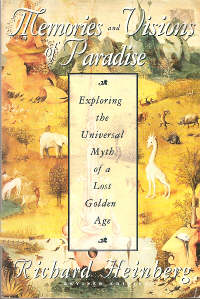
 Taylor's recounting
of what was lost from an earlier Age, is expanded on in an
earlier work by Richard Heinberg,
Memories
and Visions of Paradise : Exploring the Universal Myth of
a Lost Golden Age. There are many common elements
between Heinberg and Taylor's approach. Both see
a "return to the Garden," and present evidence that
a sea change in underway. Heinberg quotes from
Bucke's
Cosmic Consciousness, using an argument that this
Author used himself in Lumen
(1986, p. 136-150) -- namely, that our entire species is
involved in an expansive evolutionary trend from
Self-consciousness to Cosmic Consciousness.
 I now regard
any notion that such a change can take place without
cataclysm as provincial.
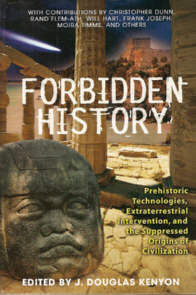
 Edited by
J. Douglas Kenyon,
Forbidden History -- a
collection of 42 essays dealing with the
"suppressed origins of civilization" -- covers
a broad swath. Most notable because its
important thesis in Meditopia is that
Modern Science has been far more about the
suppression of knowledge and/or its sequestration
to the benefit of a select Elite, than it is about
the open quest for Truth.
 Forbidden
History Forbidden
History is but one of a slew of works to
recently surface that are supportive of Premise #1
in this chapter: that history is not linear.
It's circular . . . or, as an old Indian proverb
teaches, "There is nothing new under the sun."
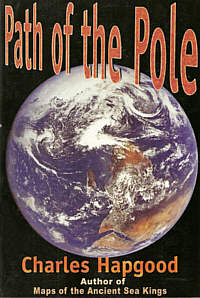
 Modern, orthodox
archaeology / anthropology / human history is still held
in place by the "uniformitarians." The entire notion
that the earth regularly undergoes crustal displacement and
the north and south poles change positions is still
considered dubious. To admit that this is the case
would be a wholesale admission of defeat by orthodoxy
and a statement of victory for the catastrophists.
 But given the
weight of evidence at hand -- which has only been
enhanced since Charles Hapgood wrote
Path of the Pole
(originally written, 1952) --
just when will orthodoxy throw in the towel?
 "A great many empirical
data indicate that at each point on the earth's surface
that has been carefully studied, many climatic changes have taken
place, apparently quite suddenly. This . . . is explicable if the
virtually rigid outer crust of the earth undergoes, from time
to time, extensive displacement over the viscuous plastic,
possibly fluid inner layers. Such displacement may take place
as the consequence of comparatively slight forces exerted
on the crust, derived from the earth's momentum of rotation,
which in turn will tend to alter the axis of rotation of the
earth's crust . . . I think that this rather astonishing,
even fascinating, idea (of crustal displacement) deserves
the serious attention of anyone who concerns himself with
the theory of the earth's development."
 Such a pronouncement
was not made by a cataclysm fanatic. Albert Einstein
wrote this in the Foreword for the First Edition of Hapgood's
work, three years before he died in 1955. This only
reinforces lessons we gained from the trials of Linus
Pauling in Chapters 1 and 4: no matter how high you ascend
the ladder of success in orthodoxy's world, you risk
having your ideas, if not your reputation, besmudged by
your colleagues, if you don't strictly adhere to
orthodoxy's statement of reality.

 Immanuel
Velikovsky's Worlds
in Collision (1950) was the first of four books written
by this esteemed physician on the subject of his view of
catastrophism.
 Taken together,
the reader is presented with such a dizzying array of
evidence -- archaeological, historical, and from a
surprising number of indigenous sources, that one has
to wonder how orthodoxy has been able to hold out
for so long.
 To answer, by
now should be easy: after all, if the orthodox medical
community can convince the public that radically toxic
therapies like chemotherapy and radiation therapy are
actually good for them, they can convince a naive public
to believe anything.
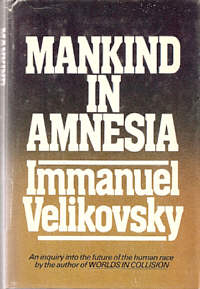
 Mankind, in Velikovsky's
theoretical framework, is the victim of untold planetary
destruction. Collectively, we subconsciously seek to
relive our trauma, while paradoxically seeking to hide
the truth of the obvious. This explains, in part, while
as mind-numbingly proposterous as orthodox archaeology
is in having ever embraced the uniformitarian position in
the first place, our race so doggingly sticks to a worldview
that world cataclysm is extraordinarily rare.
Velikovsky's position is not wild
conjecture. Widely regarded as one of the greatest
psychiatrists of the 20th century, Velikovsky was merely
extrapolating from what psychiatrists observe in trauma
victims all the time. The only debatable point is:
could mankind be acting, through its collective unconscious,
as an amnesia victim. Could this explain the wholesale
destruction of the planet's life-support systems?
 Velikovsky's position
is quite possible, nor is it exclusive to or a rejection of,
the theory of a current, self-centered, suicidal GCOS
as the foundation for our current civilizational era.
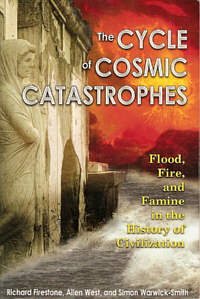
 Velikovsky drew
primarily from written records -- most of them ancient --
to make his point about the frequency of cataclysmal
events on our planet. Drawing from an array of
more recent archaeological evidence, Firestone (et al.)
demonstrates that just one cosmic event (for which
he names the explosion of Supernova Geminga approximately
43,000 years ago as the most likely candidate) as the
cause of not one, but THREE distinct and separate
cataclysmic eras in
The Cycle of Cosmic Catastrophes.
He then overlays the recent archaeological evidence with
matching indigenous stories which concur with
the scientific find.
 These events --
all sufficient to rewrite the GCOS in their respective
times -- are the subject of numerous indigenous stories.
Strangely, all of the stories bear the same common
elements: "(1) The Creator warns of trouble (i.e. comparable
to Mother Earth sending us distress signals in our own time?),
(2) Almost everyone ignores the warnings, (3) The few people
who listen take action to save themselves and others,
(4) Fire, stones, and/or ice soon fall from the sky.
(5) Thick clouds form, heavy rains fall, and flooding begins.
(6) Many people plants and animals perish.
(7) Some survive to build and repopulate the world." (p. 154)
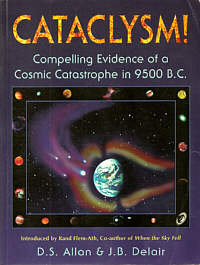
 Cataclysm!
Cataclysm! makes the
most compelling case I've seen for a cosmic
catastrophe over 11,000 years ago. It closely
corresponds to "the Flood," as depicted
in Genesis. Phaeton is the candidate of
choice for D.S. Allan and J.B. Delair,
but for this author's current thesis, the cause
is quite irrelevant. More important, is the
presentation of an astonishing amount of evidence
of the degree to which this one catastrophy
remade our world, its topography, and undoubtedly . . .
it's GCOS.
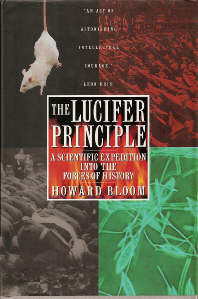
 The notion
that whatever "operating system" runs our "Matrix,"
decidedly favors evil over good will not surprise
most. Howard Bloom doesn't say exactly that -- you
have to connect the dots for yourself -- but he
does make clear that what WE call "evil" is a
by-product of the creative process.
 The idea -- and
conclusion -- is old and well-worn. Bloom himself
opens with the story of Marcion, an "influential
Christian heretic" who -- circa 200 A.D. --
took a look at the world around him
and came to the conclusion that "the god who created our
cosmos couldn't possibly be good. The universe was shot
through with appalling threads -- violence, slaughter,
sickness, and pain. These evils were the Creator's
handiwork. Surely he must be some perversely sadistic
force, one who should be banished from influence over the
minds of men." (p. 1)
 Nonetheless, I have -- of late --
heard this same refrain from a surprising number of sources.
Last year, I happened to read Kurt Vonnegut's final work before checking out of this
wonderful place himself. His closing words are telling:
"When the last living thing / has died on account of us. /
How poetical it would be / if Earth could say, / in a voice
floating up / perhaps / from the floor / of the Grand Canyon. /
'It is done.' / People did not like it here."
(See A Man
Without a Country, p. 137.) He does little to give any
indication in his final composition that in his 82 years,
he found anything distinctly "good" about humanity.
 "Evolution
can go to hell as far as I am concerned.
What a mistake we are. We have mortally wounded
this sweet life-supporting planet ... with
a century of transportation whoopee." (p. 9)
 Kurt Vonnegut Kurt Vonnegut
 Yet he is even closer
to the "mark," (as in Twain) in making mention of one of
Samuel Clements last works, a curious short story entitled,
The
Mysterious Stranger.
" . . . if (one doubts) we are demons
in Hell, he should read The Mysterious Stranger,
which Mark Twain wrote in 1898," Vonnegut writes, " . . .
In the short story he proves to his own grim satisfaction
and to mine as well, that Satan and not God created the planet
earth and the 'damned human race.' If you doubt that,
read your morning paper. Never mind what paper. Never
mind what date." (p. 111-112).
 Twain closes his story
quoting the character representative of "God," as telling
the protagonist: "Strange! that you should not have suspected
years ago -- centuries, ages, eons ago! -- for you have existed,
companionless, through all eternities . . . (that you have
resided in a dream with) a God who could make good children
as easily as bad, yet preferred to make bad ones; who could
have made every one of them happy, yet never made a single
happy one; who made them prize their bitter life, yet
stingily cut it short; who gave his angels eternal happiness
unearned, yet required his other children to earn it; who
gave his angels painless lives, yet cursed his other
children with biting miseries and maladies of mind and body;
who mouths justice and invented hell -- mouths mercy and
invented hell -- mouths Golden Rules, and forgiveness
multiplied by seventy times seven, and invented hell; who
mouths morals to other people and has none himself; who frowns
upon crimes, yet commits them all; who created man without
invitation, then tries to shuffle the responsibility for man's
acts upon man, instead of honorably placing it where it
belongs, upon himself; and finally, with altogether divine
obtuseness, invites the poor, abused slave to worship him! . . .
(p. 252-253).
 Such disonance comes
from the oddest places. I remember re-reading the Book of
Ecclesiastes (Old Testament) while in prison and coming to
the conclusion that if King David (the alleged author) could
pen something so nihilistic, what conclusions should come to
the rest of us. "I have seen all the works that are done under
the sun; and, behold, all is vanity and vexation of
Spirit. That which is crooked cannot be made straight; and
that which is wanting cannot be numbered
. . . I gave my heart to know wisdom and to know
madness and folly. I perceived that this also is vexation
of spirit. For in much wisdom is much grief; and he that
increaseth knowledge increaseth sorrow."
(Ecclesiastes, 1:14,15,17,18.
Bible, p. 505.)
 Such words hardly come from
the mind of a man who believes that the world rests on a foundation
of good.
 From the time I was a
small boy -- well before I became a meditator at the age of 15 --
or even entered the seminar (at 16), I had the impression, the
feeling, the unmistakeable sense that I was living through a
time of enormous imbalance. And yet -- this crookedness, this
monumental defect that was imbued in all facets of human existence,
was a temporary state, and not a statement of man's
permanent condition.
 That the teachings of
indigenous from around the world tell of a Golden Age preceeding
this one, confirms my own sense. It tells me that Bloom's
Luciferian World is a statement of our age and not man's
potential.
 It tells me that with
the right GCOS set in motion in the aftermath of the next
cataclysm, we can return to the Golden Age. We can
create a global society where joyful variations of
"Always Cooperate" have a chance.
 We can create a world
in complete, utter contrast to this one -- a world that is
not . . . Luciferian.
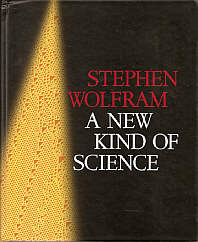
 Steve
Wolfram's New
Kind of Science provides the foundation for my belief that
the model of a GCOS (Global Cultural Operating System) is a useful
tool in understanding our current state of the world.
 And what or who
sets an GCOS in motion? Many authors hint that a GCOS exists,
but no one provides an satisfactory answer.
Perhaps we can never know with certainty.
Zacharia Sitchin might say that ancient Sumerian texts
provide the answer: that we are a slave race, the result
of advanced genetic manipulation (which, would, of course,
explain the inexplicable "missing link" that has dogged
anthropologists now for the entirety of the discipline's
existence) -- that the
greed and selfishness of our age is the leftover remnant
of extraterrestrial forces that came to the planet eons
ago, not to live in harmony here with its other inhabitants,
but to exploit it for minerals.
 I have a very difficult
time dismissing Sitchin -- or the Sumerian scribes who composed
the ancient works that is the wellspring for Sitchin's material.
It isn't simply that Sitchin's theses -- which are as radically
at variance, even defiant, of our "common narrative" as any in
popular non-fiction, but rather its air of authenticity.
(My primary reservation rests in the fact that Sitchin describes
an "Annanaki" that co-existed with "humans" over eons, in fact,
trans-cataclysmally through multiple GCOS rewrites).
 Strangely, I acquired
a renewed respect for Sitchin's work when I considered the
implications of Cleve Backster's work with plants.
(The connection is not immediately intuitive, so I explain below.)
 Nonetheless, this, or
any other theory which attempts to solve the riddle as to what
could have set our current GCOS into motion, is bound to
be contentious. Our quest to find an "initiating condition" or causative agent
may always be conjectural. We are left to wonder (1) what agent
wrote, created, or otherwise cast those first few sensitive lines of
GCOS code that gave birth to our Luciferian world,
and (2) under what conditions was that GCOS candidate able to
blossom -- crushing other possible candidates in its wake.
This quest is, to my mind, both unknowable and irrelevant.
We know from its blossoming result that it exists -- even
if we are shielded from knowing the exact particulars with
certainty.
 I am not embarrassed by this position.
 Astrophysicists argue
the very same kind of questions in debating the particulars
of the Big Bang. Even with the relatively recent inclusion
of String Theory, I have found most explanations for events before
and during the Big Bang to be as wildly conjectural as any
I may make for the originating conditions of our GCOS.
[ 48]
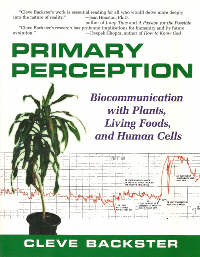
 I first became
familiar with Cleve Backster's work as a teenager
with Tompkins' The Secret Life
of Plants (1973). The 2003 update on Backster's work,
Primary Perception greatly
expanded on the small section devoted to Backster in
the earlier work.
 Perhaps every reader
who encounters these works comes away with a different impression.
Here's mine -- the short version, of course --
and here's the relevance to the current chapter:
modern, "civilized" man -- homo industrialis -- pick the name of your
choice to describe our kind -- is an extreme aberration, so completely
divorced from Nature and the workings of this planet, that it is in
no way inaccurate, or a convenient turn of poetry, to say that we
are vastly inferior to ordinary plants.
 Backster's work repeatedly
points to a world of plants where organisms communicate "telepathically" --
sometimes over extraordinary distances. Whereas we experience
the limits of five senses -- seeing, not as good as eagles; smelling,
not as good as dogs; hearing, touching, and sensing, not as good as too many animals to name . . .
plants in their world have approximately twenty senses. The innumerable
ways in which plants are "rooted" in the earth, communicate with their
surroundings, and share empathy with other organisms -- even on the
cellular level, makes me question by what measure of insanity
we have gathered the audacity to call ourselves "sapiens" -- an intelligent
species.
 Zacharia Sitchin's rendering
of Sumerian texts sounds positively loony -- but only in relation to the
common narrative. If we are not the aberrant result of genetic tickering
by extraterrestrial creatures more intelligent than ourselves . . if we
are not a mutant humanoid race -- a parasitic virus to this planet,
than why do we behave as if we are?
 And, yet . . . condemning of my
own kind as I may sound, I am moved, when I read indigenous stories of
life "before the Fall," to believe that contained with our
current GCOS is the power to reduce us to such primitive,
industrial savages. On the other side of the next cataclysm will be
a new GCOS, one that will recognize the folly of our current path,
one that will allow us to regain what we lost before the "Fall."
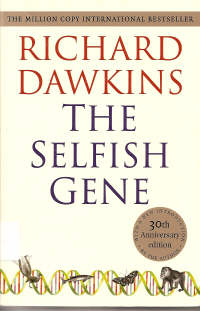
 I decided to use
a section of Dawkins' The Selfish Gene
to illustrate the various strategies that an operating system
(in this case, the rules of a game called "Iterated Prisoner's
Dilemma") can make. The rules of the game will ultimately
determine the which strategies are most successful under
the dictates of those rules . . . just as there are hidden
within Wolfram's formulas, the outcomes -- some quite
unintended -- that must blossom therefrom.
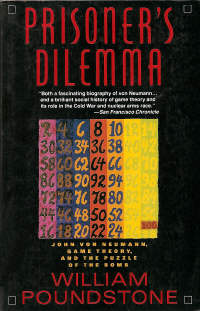
 I am no expert
at Game Theory, though I felt the employment of
"Prisoner's Dilemma" was important to demonstrate
the relationship between the rules of an underlying
set of conditions ("operating system") and those strategies
that will best exploit it.
 Dawkins' book is
very poor as a primer (as is this chapter), so, for a more
thorough introduction to this area of game theory,
its history, and the life of one of its early
innovators (John von Neumann), I recommend
Prisoner's Dilemma.
Essential, too, are the more recent volumes on "cooperation"
by Robert Axelrod.
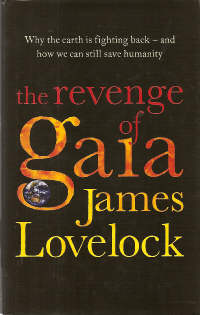
 James Lovelock,
the beloved promoter, for some 20 years now, of the
concept of "Gaia" (the idea that our Mother Earth, with its
extensive control systems, exhibits
characteristics that using even the strictest criteria in
biology constitute evidence of a distinct living organism),
has thrown in the towel. Oh sure -- he provides the
salutory, "Go team, go! We can win!" -- in fact,
it's on his cover, "We can still save humanity."
 However, underneath
the bravado -- if you read the book through in its entirety --
is the distinct sense that the football score
is 36-0; your team is losing;
there's two minutes left in the fourth quarter . . .
but what are you going to do? You can't very well cheer for the
other team, can you?
 Ervin Laszlo sees
through the bravado, as well, and notes Lovelock's
position as an acknowledgement that we have passed
a "point of no return." (p. 31) In his
The Chaos Point, he argues
that it is not too late (p. 84-85) -- but even in its
beseeching ("Seven Years to Avoid Global Collapse . . . "),
I detect a faint-heartedness.
 More importantly, I think that
Laszlo misses the point: he wants renewal, but he refuses to
acknowledge that when things are this --- well ... what can I say?
Nothing short of the vernacular will do here --- when things are this
totally, completely, and irreversibly fucked up, you cannot have
renewal without cataclysm.
 You can't have life without rebirth,
and you can't have rebirth without death.
 You can't save this global system ---
it's beyond repair . . . of which the unspeakably decadent state of
modern medicine is but a microcosm (which, as we'll see later, shares its virulent characteristics
throughout the full spectrum of what we call civilization).
 We
need a complete overhaul of our GCOS . . . unfortunately, we don't
get that without cataclysm.
 And there are unmistakeable
signs that Mother Nature --- which has just about had its fill
of humanity --- has no qualms about accommodating . . .
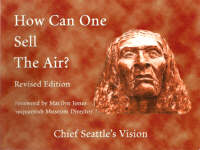
 Jared Diamond is incorrect
in asserting that the Native peoples of the Americas
"lost" to superior European forces merely because they
were technologically inferior. Ostensible technical deficiency in warfare
was a symptom of something much more fundamental.
Native Americans' inability to murder, plunder, and steal -- at a
pace, even when they learned how the European game is supposed to be played --
that could compete with their counterparts, was born of deficient
operating cultures that did not play well in the current GCOS.
 This disparity is
apparent in a famous speech given by Chief Seattle of the
Squamish tribe in what is now Washington State. The value
it places on man's connectedness with his environment stands
in stark contrast to the values of our GCOS's winning strategy.
The excerpt, below, annunciates this chasm:
 Every part of this earth
is sacred to my people. Every shining pine needle, every tender shore,
every vapor in the dark woods, every clearing, and every humming insect
are holy in the memory and experience of my people. The sap, which
courses through the trees, carries the memories of the red man. Every part of this earth
is sacred to my people. Every shining pine needle, every tender shore,
every vapor in the dark woods, every clearing, and every humming insect
are holy in the memory and experience of my people. The sap, which
courses through the trees, carries the memories of the red man.
 The white man's dead forget
the country of their birth when they walk among the stars. Our dead
never forget this beautiful earth, for it is the mother of the
red men. Our dead always love and remember the earth's swift rivers,
the silent footsteps of spring, the sparkling ripples on the surface
of the ponds, the gaudy colors of the birds. We are a part of the earth
and it is a part of us. The perfumed flowers are our sisters: the deer,
the horse, the great condor, these are our brothers. The rocky crests,
the juices in the meadows, the body heat of the pony, and man all belong
to the same family. So when (Washington) sends word that he wishes to
buy our land, he asks much of us . . . The white man's dead forget
the country of their birth when they walk among the stars. Our dead
never forget this beautiful earth, for it is the mother of the
red men. Our dead always love and remember the earth's swift rivers,
the silent footsteps of spring, the sparkling ripples on the surface
of the ponds, the gaudy colors of the birds. We are a part of the earth
and it is a part of us. The perfumed flowers are our sisters: the deer,
the horse, the great condor, these are our brothers. The rocky crests,
the juices in the meadows, the body heat of the pony, and man all belong
to the same family. So when (Washington) sends word that he wishes to
buy our land, he asks much of us . . .
 (But) we will consider your offer . . .
It will not be easy. This land is sacred to us. We take our pleasure in the
woods and the dancing streams. The water that moves in the brooks is not
water but the blood of our ancestors. If we sell you the land, you must
remember that it is sacred to us, and forever teach your children that it
is sacred. Each ghostly reflection in the clear water of the lakes tells of
events and memories in the life of my people . . . (But) we will consider your offer . . .
It will not be easy. This land is sacred to us. We take our pleasure in the
woods and the dancing streams. The water that moves in the brooks is not
water but the blood of our ancestors. If we sell you the land, you must
remember that it is sacred to us, and forever teach your children that it
is sacred. Each ghostly reflection in the clear water of the lakes tells of
events and memories in the life of my people . . .
 If we sell our land, you must
remember, and teach your children, that the rivers are our brothers, and
yours, and you must henceforth give the rivers the kindness you would
give to any brother. The white man does not understand. One portion
of land is the same to him as the next, for he is a wanderer who comes in the
night and takes from the land whatever he needs. The earth is not his
brother, but his enemy, and when he has won the struggle, he moves on. He
leaves his father's graves behind, and he does not care. He kidnaps the
earth from his children. And he does not care. The father's graves
and the children's birthright are forgotten by the white man, who treats
his mother the earth and his brother the sky as things to be bought, plundered,
and sold, like sheep, bread, or bright beads. In this way, the dogs of appetite
will devour the rich earth and leave only a desert. If we sell our land, you must
remember, and teach your children, that the rivers are our brothers, and
yours, and you must henceforth give the rivers the kindness you would
give to any brother. The white man does not understand. One portion
of land is the same to him as the next, for he is a wanderer who comes in the
night and takes from the land whatever he needs. The earth is not his
brother, but his enemy, and when he has won the struggle, he moves on. He
leaves his father's graves behind, and he does not care. He kidnaps the
earth from his children. And he does not care. The father's graves
and the children's birthright are forgotten by the white man, who treats
his mother the earth and his brother the sky as things to be bought, plundered,
and sold, like sheep, bread, or bright beads. In this way, the dogs of appetite
will devour the rich earth and leave only a desert.
 The white man is like a snake who eats
his own tail in order to live. And the tail grows shorter and shorter. Our ways
are different from your ways. We do not live well in your cities, which seem like
so many black warts on the face of the earth. The sight of the white man's cities
pains the eyes of the red man like the sunlight that stabs the eyes of one
emerging from a dark cave. The white man is like a snake who eats
his own tail in order to live. And the tail grows shorter and shorter. Our ways
are different from your ways. We do not live well in your cities, which seem like
so many black warts on the face of the earth. The sight of the white man's cities
pains the eyes of the red man like the sunlight that stabs the eyes of one
emerging from a dark cave.
 The air is precious to the red man, for all
things share the same breath -- the beasts, the trees, and man, they are all of the same
breath. The white man does not mind the foul air he breathes. Like a man in pain
for many days, he is numb to the stench. The air is precious to the red man, for all
things share the same breath -- the beasts, the trees, and man, they are all of the same
breath. The white man does not mind the foul air he breathes. Like a man in pain
for many days, he is numb to the stench.
 If we sell you this land . . . I will make
now this condition: You must teach your children that the ground beneath their feet
responds more lovingly to our steps than to yours, because it is rich with the lives
of our kin. Teach your children what we have taught our children, that the earth is
our mother. Whatever befalls the earth befalls the sons of the earth. If men spit
upon the ground, they spit upon themselves. We know this. The earth does not belong
to the white man; the white man belongs to the earth. This we know. All things
are connected like the blood that unites our family. If we kill the snakes, the field
mice will multiply and destroy our corn. If we sell you this land . . . I will make
now this condition: You must teach your children that the ground beneath their feet
responds more lovingly to our steps than to yours, because it is rich with the lives
of our kin. Teach your children what we have taught our children, that the earth is
our mother. Whatever befalls the earth befalls the sons of the earth. If men spit
upon the ground, they spit upon themselves. We know this. The earth does not belong
to the white man; the white man belongs to the earth. This we know. All things
are connected like the blood that unites our family. If we kill the snakes, the field
mice will multiply and destroy our corn.
 All things are connected. Whatever befalls
the earth befalls the sons and daughters of the earth. Man did not weave the web of life;
he is merely a strand in it. Whatever he does to the web, he does to himself. All things are connected. Whatever befalls
the earth befalls the sons and daughters of the earth. Man did not weave the web of life;
he is merely a strand in it. Whatever he does to the web, he does to himself.
 Tribes are made of men, nothing more. Men
come and go, like the waves of the sea. The whites too shall pass, perhaps sooner
than all other tribes. Continuing to contaminate his own bed, the white man will one
night suffocate in his own filth. Tribes are made of men, nothing more. Men
come and go, like the waves of the sea. The whites too shall pass, perhaps sooner
than all other tribes. Continuing to contaminate his own bed, the white man will one
night suffocate in his own filth.
 But in his perishing the white man will shine
brightly, fired by the strength of the god who brought him to this land and for some
special purpose gave him dominion over this land. That destiny is a mystery to us,
for we do not understand what living becomes when the buffalo are all slaughtered,
the wild horses all tamed, the secret comers of the forest are heavy with the scent
of many men, and the view of the ripe hills blotted by talking wires. Where is the
thicket? Gone. Where is the eagle? Gone. And what is it to say goodbye to the swift
pony and the hunt? The end of the living and the beginning of survival. But in his perishing the white man will shine
brightly, fired by the strength of the god who brought him to this land and for some
special purpose gave him dominion over this land. That destiny is a mystery to us,
for we do not understand what living becomes when the buffalo are all slaughtered,
the wild horses all tamed, the secret comers of the forest are heavy with the scent
of many men, and the view of the ripe hills blotted by talking wires. Where is the
thicket? Gone. Where is the eagle? Gone. And what is it to say goodbye to the swift
pony and the hunt? The end of the living and the beginning of survival.
 If we sell you our land, it will be filled with
the bold young men . . . Your dead go to walk among the stars, but our dead return
to the earth they love. The white man will never be alone unless, in some distant
days, he destroys the mountains, the trees, the rivers, and the air. If the earth
should come to that, and the spirits of the dead, who love the earth, no longer
wish to return and visit their beloved, then in that noon glare that pierces the
eyes, the white man will walk his desert in great loneliness . . . If we sell you our land, it will be filled with
the bold young men . . . Your dead go to walk among the stars, but our dead return
to the earth they love. The white man will never be alone unless, in some distant
days, he destroys the mountains, the trees, the rivers, and the air. If the earth
should come to that, and the spirits of the dead, who love the earth, no longer
wish to return and visit their beloved, then in that noon glare that pierces the
eyes, the white man will walk his desert in great loneliness . . .
 [Excerpt of Ted Perry version of
Chief Seattle's 1854 speech,
How Can One Sell the Air?, p. 49-61. ]
|



















